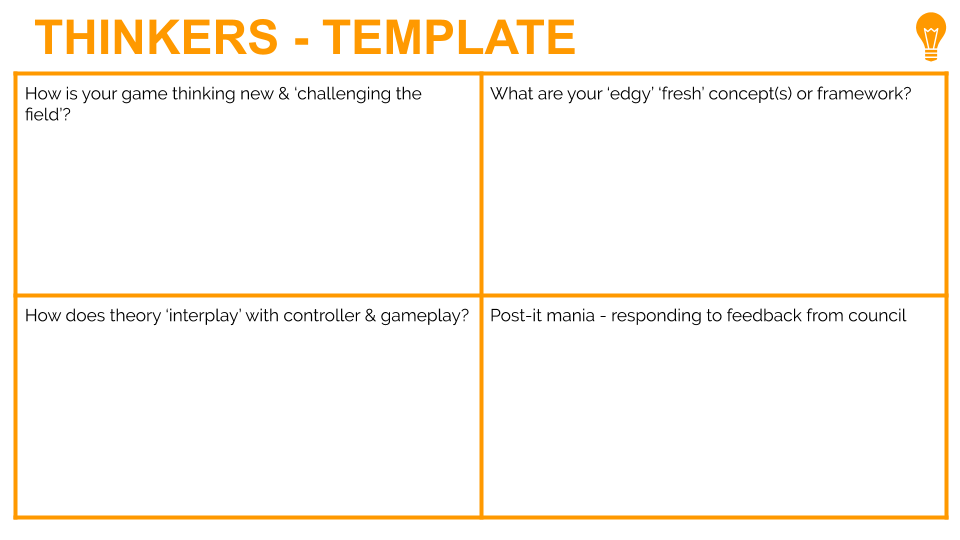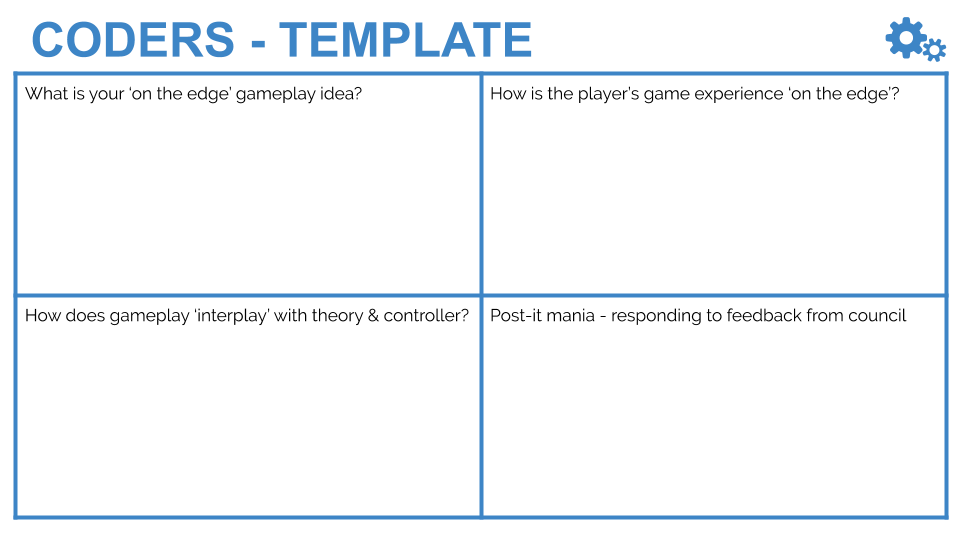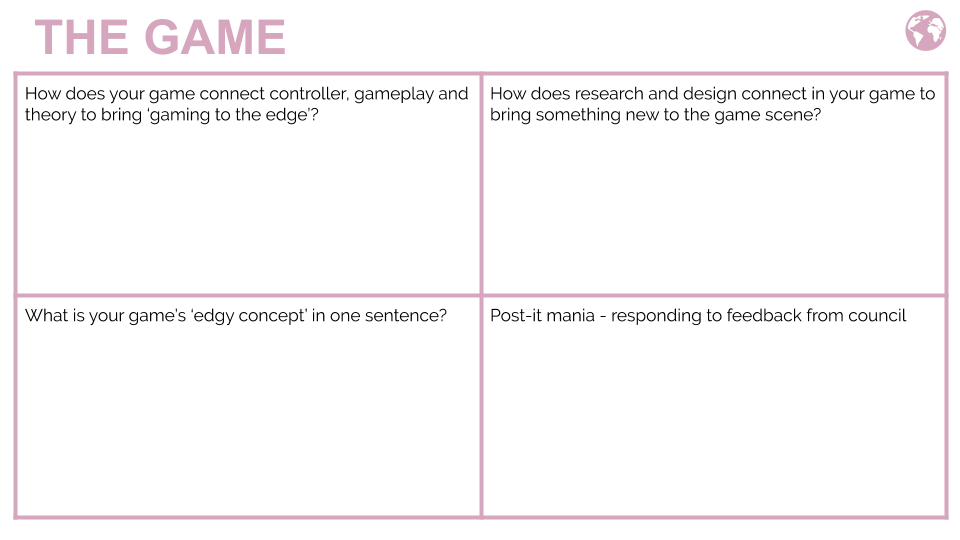3.2 Design team process and products: student cases
In this section you will get some insight into the examples the five design teams came up with and how they were developed.
3.2.2 Jamboards
 |
| (Click to Enlarge the Figure) |
 |
| (Click to Enlarge the Figure) |
 |
| (Click to Enlarge the Figure) |
 |
| (Click to Enlarge the Figure) Download all of the templates here |
As mentioned, the design teams had four meetings with the ‘Game Jam Council’. This corresponded to the four phases of the double diamond design model as described in Unit II: Discover (the initial idea), Define (the innovative game concept), Develop (the game prototype) and Deliver (the academic presentations and playable game exhibition). At the end of the process each team had to present and argue for their game concept before the game exhibition was opened and the audience could try out their games and engage in discussions with the teams.
The five presentations, along with Rikke Toft Nørgård and Claus Toft-Nielsen’s opening, can be seen on the next couple of pages. This can serve as inspiration for coming up with your own game concept aiming at creating change or value for people, organisations or the public. In the last part of the unit you will be able to put this inspiration into action in an exercise taking you through the double diamond design model to create games for change.

